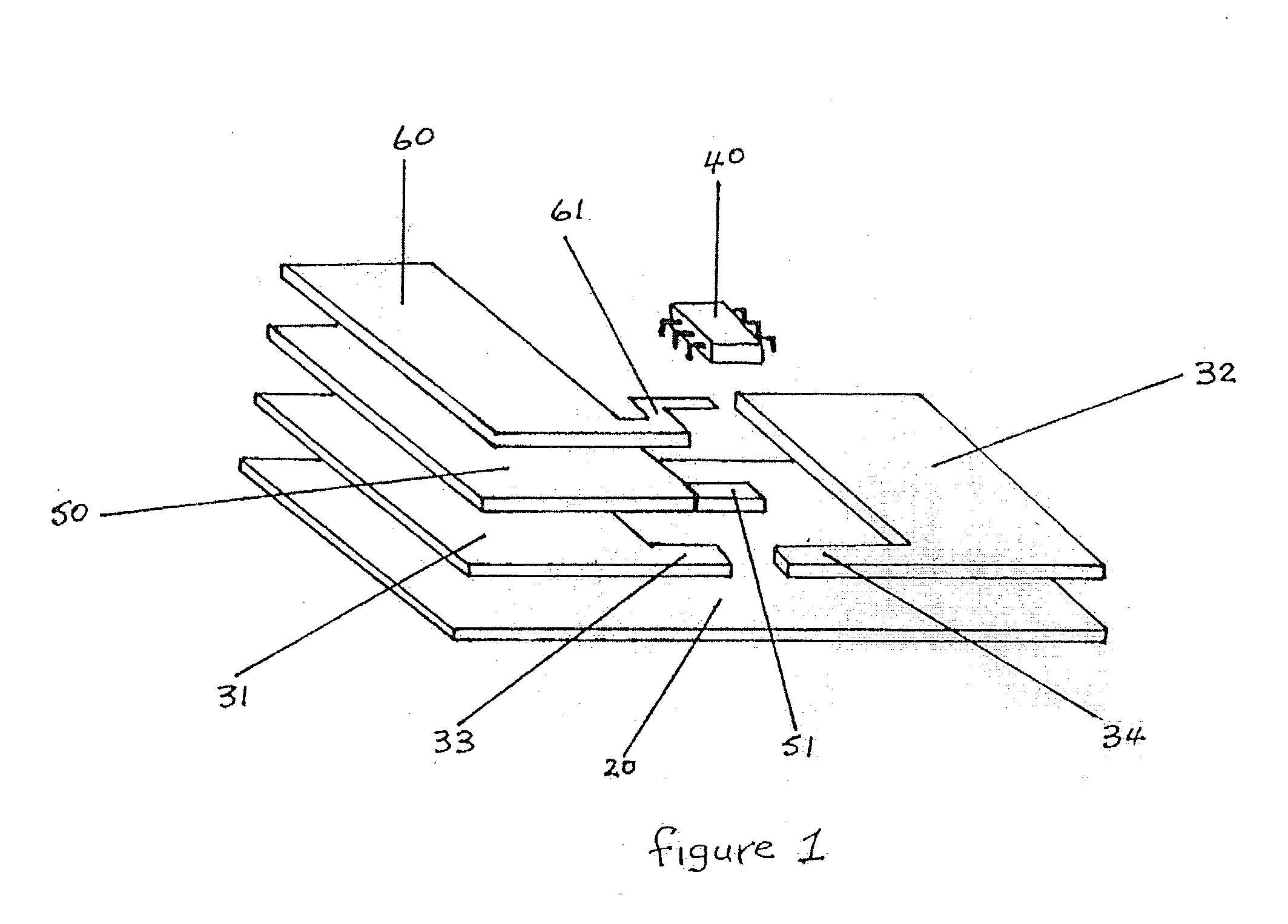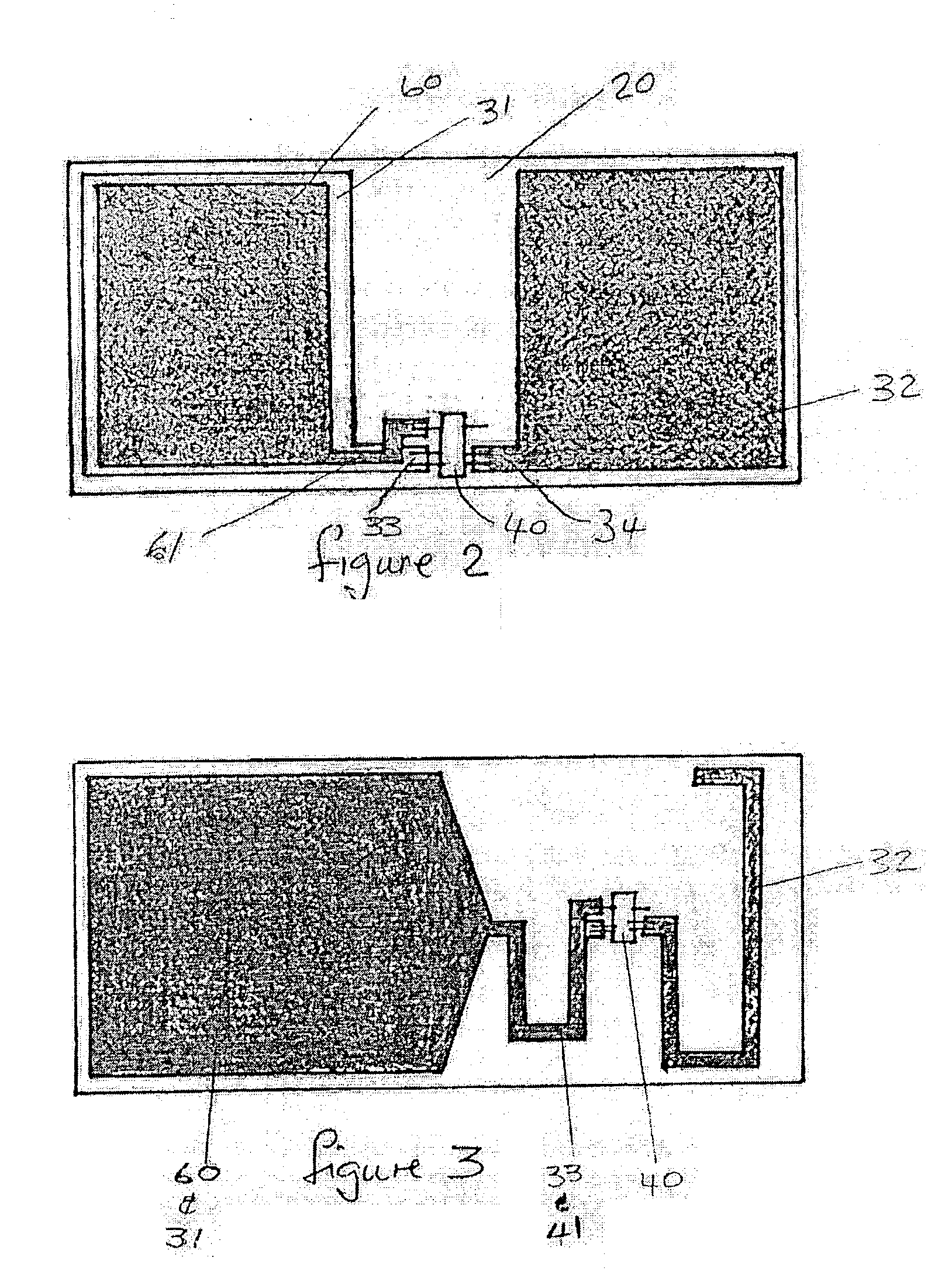RFID tag
- Summary
- Abstract
- Description
- Claims
- Application Information
AI Technical Summary
Benefits of technology
Problems solved by technology
Method used
Image
Examples
Embodiment Construction
[0009] RFID tags usually (but not always) comprise an antenna which is formed of conductors; printed, plated, deposited or etched on a non-conductive substrate which may be flexible or rigid; to which is attached by means of solder or adhesives an electronic integrated circuit and optionally additional peripheral components. The antenna and integrated circuitry may also be formed on the integrated circuit itself, or spread over several insulating or semiconductor substrates. The conductors may be in the form of a dipole, loop, coil, zig-zag or patch antenna of types well known in the art. The antenna elements serve to collect radio frequency energy from the environment and conduct the energy to the integrated circuit, and to provide communication between the tag and the reader. The integrated circuit may have an external connection from its internal DC circuits to which a battery or other power source may be connected in order to provide the power necessary to operate the integrated...
PUM
 Login to View More
Login to View More Abstract
Description
Claims
Application Information
 Login to View More
Login to View More - R&D
- Intellectual Property
- Life Sciences
- Materials
- Tech Scout
- Unparalleled Data Quality
- Higher Quality Content
- 60% Fewer Hallucinations
Browse by: Latest US Patents, China's latest patents, Technical Efficacy Thesaurus, Application Domain, Technology Topic, Popular Technical Reports.
© 2025 PatSnap. All rights reserved.Legal|Privacy policy|Modern Slavery Act Transparency Statement|Sitemap|About US| Contact US: help@patsnap.com



